Jeffrey | Poker Strategy
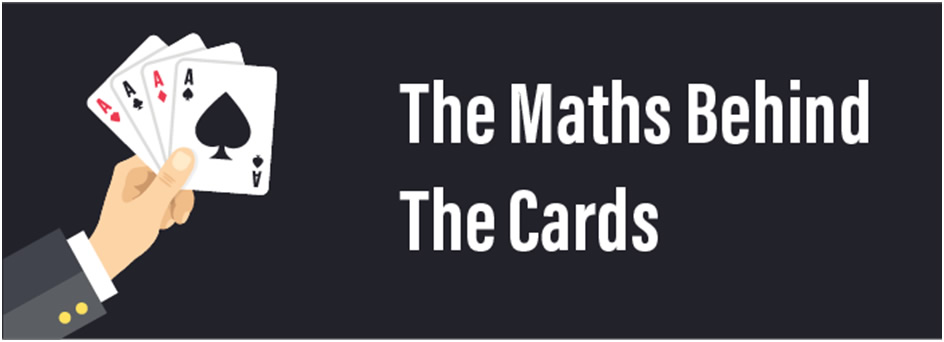
When you’re trying to decide which Betfair casino table game you’re going to play many people will naturally gravitate towards the card games. Whether you know it or not, card games tend to have much better odds than other table games and allow for more player involvement in decision making.
If you’re not well versed in statistics, working out the maths might seem like a challenging proposition – that’s why we’ve put together this handy guide to help you make the smartest play you can.
Step 1: Understanding odds and probabilities
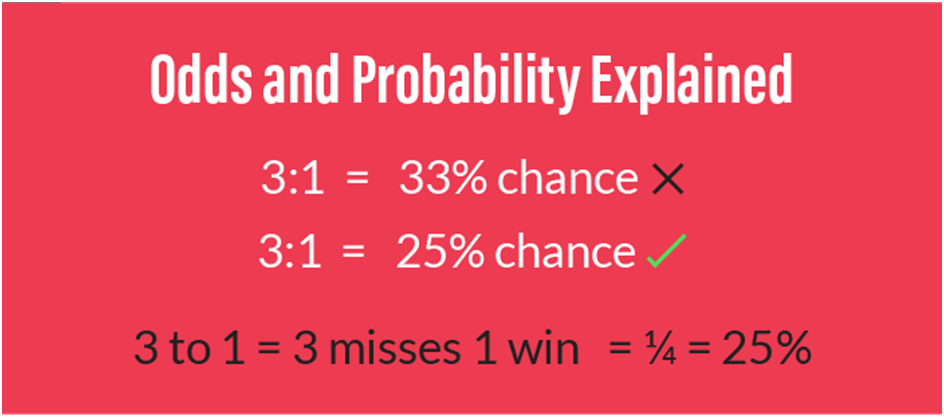
Before we begin to talk about the odds, it’s important that we make sure you know how to express odds in a way that makes sense. It’s a common mistake, when people see odds written as 3:1 to believe that this means they have a 33% of winning but in truth, they should expect to win only 25% of the time. Odds expressed as 3:1 mean that you’ll lose 3 times for every 1 win, the total number of events is every number in the odds added up (so in this example that gives us 4) and the single victory is then 1 in 4 or 25%.
If you want to express odds as a percentage, you can do so by working the odds into a fraction, i.e. dividing the top number by the bottom number and multiplying by 100. In the example, you see
¼ = 0.25 = 25%.
We’re going to be working with percentages as an easily understood way of expressing probability, but feel free to express the maths in whichever way is easiest for you.
Step 2: Understanding card probabilities
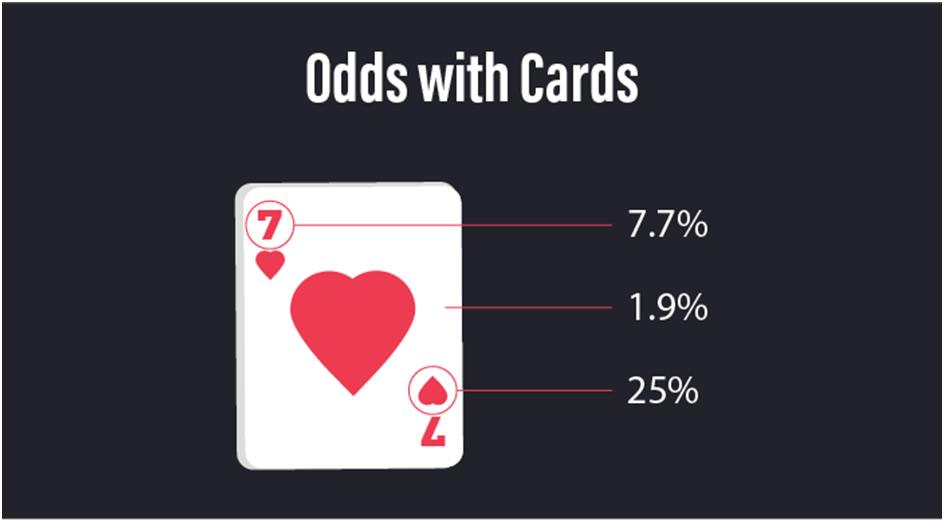
As there are 52 cards in a deck, any calculation will be working from that basis as the starting point. As we’ve illustrated here, the probability of getting a certain card is about 1.9% as the fraction odds of getting exactly what you need are 1/52. This holds true for a specific number too, there are 4 in the deck and 13 numbers so it’s 4/52 or 1/13 which is 7.7%. And for getting a card of a given suit, the odds are around 25% with 1 in 4 of the cards in the deck being of the suit you need.
The important thing to remember is that, as cards are dealt, the odds will alter and you need to subtract from your calculation any known cards that have been played. This is easiest explained by using poker as the demonstrator.
Step 3: Understanding poker outs
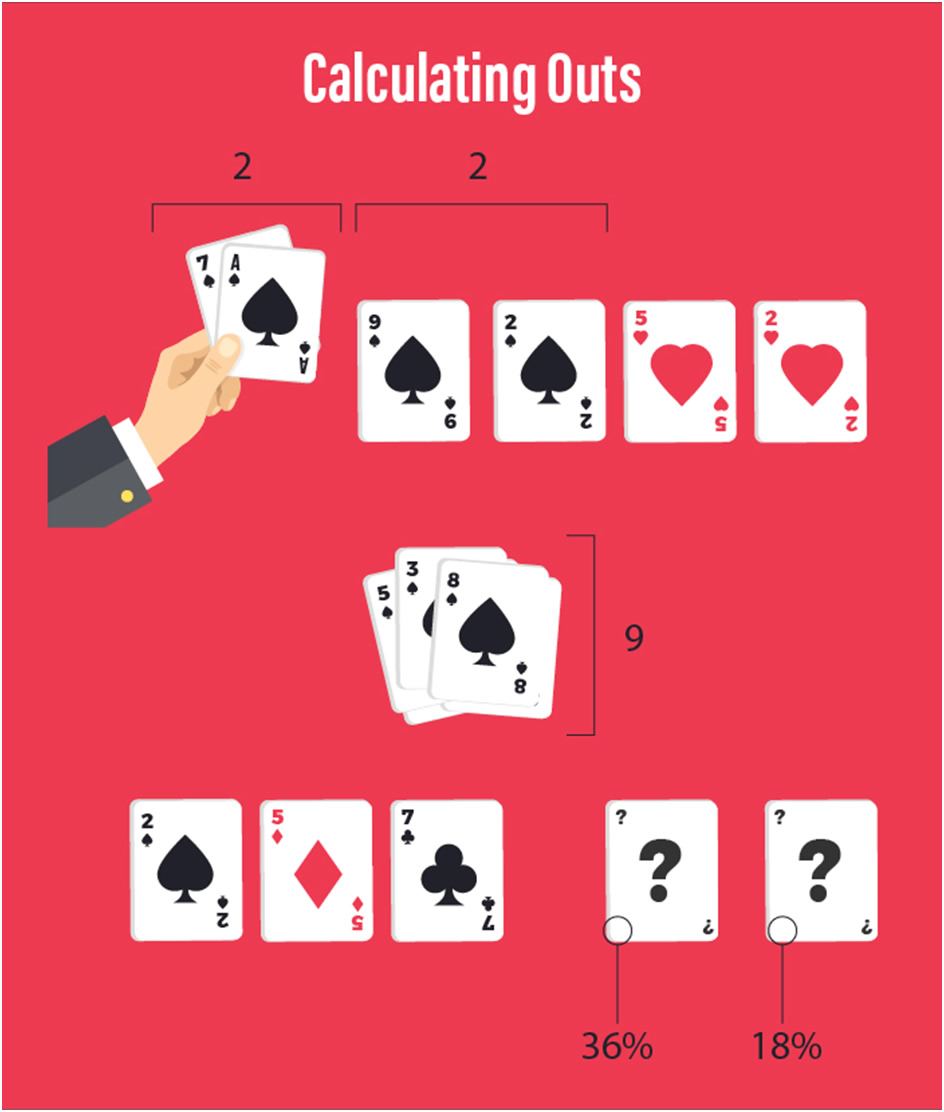
In poker, an out is the card you’re looking for in order to complete a hand. For instance, if you hold two spades and there are two on the turn then you only need one more in order to have a flush. You may already have a pair but since a flush is significantly better, you’d hope for that, so what you really want is another spade to be drawn.
You might assume the odds are still 25% like they were at the start but with 6 cards already out, you need to subtract the number of cards dealt (6) from the total at the beginning (52). You know 6 cards total have been dealt, and 4 of them are the suit you need, so there are 9 left.
9/46 gives you the percentage chance of about 19% of receiving the card you need.
Incidentally, you don’t count the other players’ cards because you can’t know what they have and it’ll just throw off your figures to make a guess.
Step 4: Quick calculations
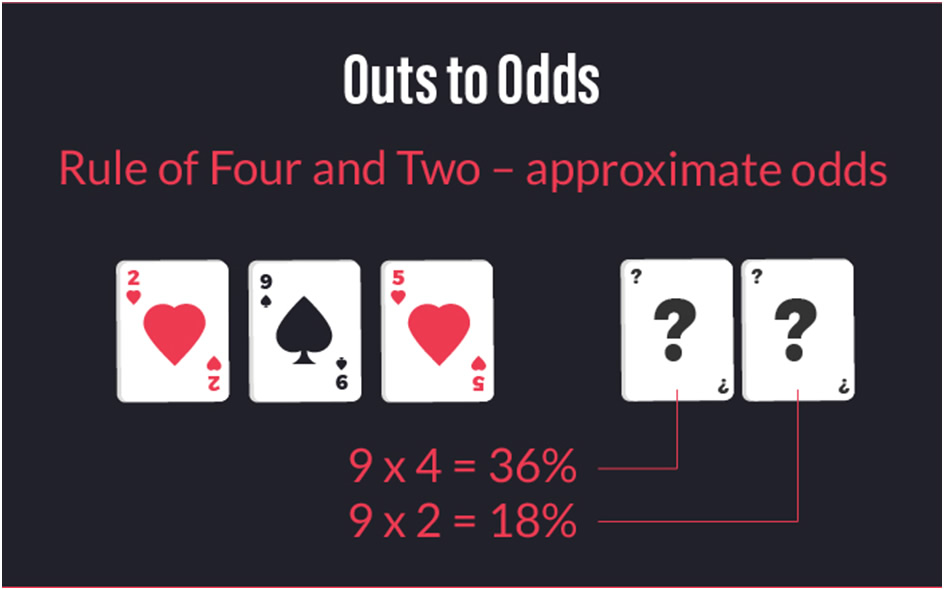
The rule of four and two is a helpful way to approximate odds whilst at the table. You won’t get the exact probability but you get a close guess in most cases and can really help in poker. How it works is: if you’ve only seen the flop, you multiply the out by 4 and if you’ve just seen the turn you multiply by 2.
You might be wondering why the odds say it’s 36% likely when we estimated 19% in the previous section. As you have two chances of the card being the one you need, the probability is doubled for the first draw but with just one card left to come out, it’s dropped back to 18% for the next.
While neither is the precise probability, it’s close enough to give you a chance.
Step 5: Other games
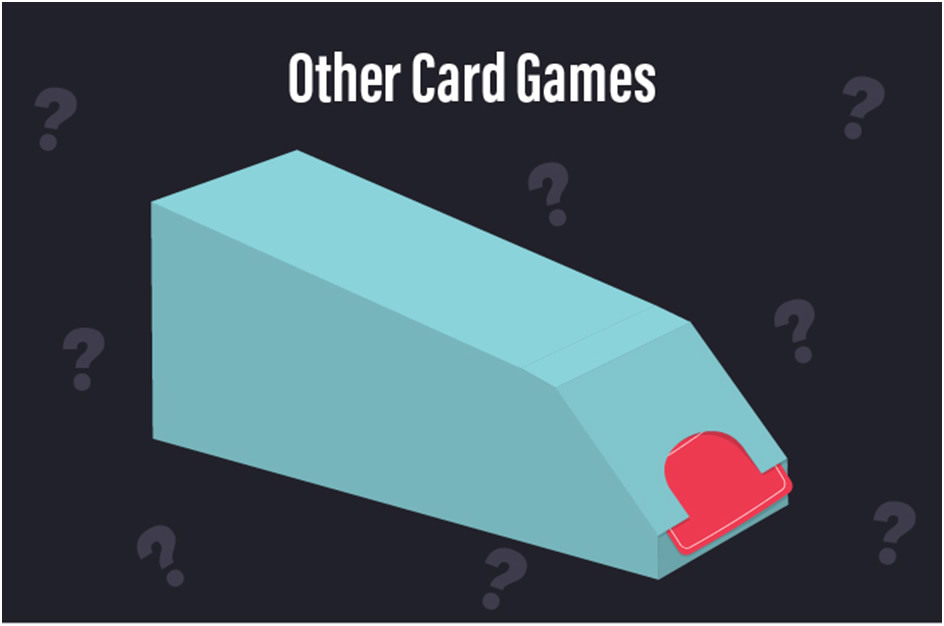
As good as this is for explaining poker odds, what about the odds for other card based casino games? Well, these games have been designed with the intention of not being easy to predict. Blackjack previously used a single deck but, in order to prevent card counting, most casinos now use multiple decks. The core calculation of X/52 is still valid but it could well get thrown off by an unlucky shuffle that happened before you sat down, and baccarat always uses multiple decks. Luckily, the odds for blackjack have been largely condensed into basic strategy as seen below so optimal play is still within your reach!
Similar Posts:
No comments yet.
Leave a comment
Special promotions
Latest Poker Strategy Articles
-
Canadian Delight: Exploring the Top Online Slots of 2024
-
The Ultimate Guide to Gambling and Betting in Australia: 2024 Edition
-
Unveiling the Top New Online Slot Games of 2024: A Must-Try List!
-
From Beginner to Winner: Essential Advice for Excelling in Australian Real Money Casinos
-
Exploring the Thrill of Live Poker Events Around the World
-
How to beat tougher poker players
-
What Are the Most Widely Played Poker Games?
-
Payment Options at Online Casino Platforms
-
New York introduces online casino bill
-
Which Poker Game Should I Play when Gambling Online
-
How to bluff effectively in poker
-
How to Manage Your Crypto Bankroll When Playing Poker
-
Online Casino Bankroll Best Practices You MUST Do
-
What is The Gambler’s Fallacy, and Should You Believe It?
-
How to Play Texas Holdem – Hands and Rules
-
Things You Should Never Do in Online Poker
-
How Poker can boost your mental acuity
-
The importance of imagery for online casinos
-
What Are the Types of Poker Games You Can Play?
-
How to Celebrate When You Win Money Playing Poker Online
-
The Most Efficient Methods of Improving Your Poker Game
-
The Popularity of Online Gambling Due to the Accessibility of Mobile Phones
-
The Single Best Tip for Poker Improvement
-
The Best Online Casino Games with Dice
-
Five Tips on Choosing the Fastest Payout Slot Sites
-
Upcoming Poker Tournaments 2021
-
The history of blackjack and why it so popular
-
How Does the Online Casino Business Model Work?
-
Top Betting Tips & Strategies for Online Casinos
-
Online Poker Vs Live Poker Games: What Are the Major Differences?
